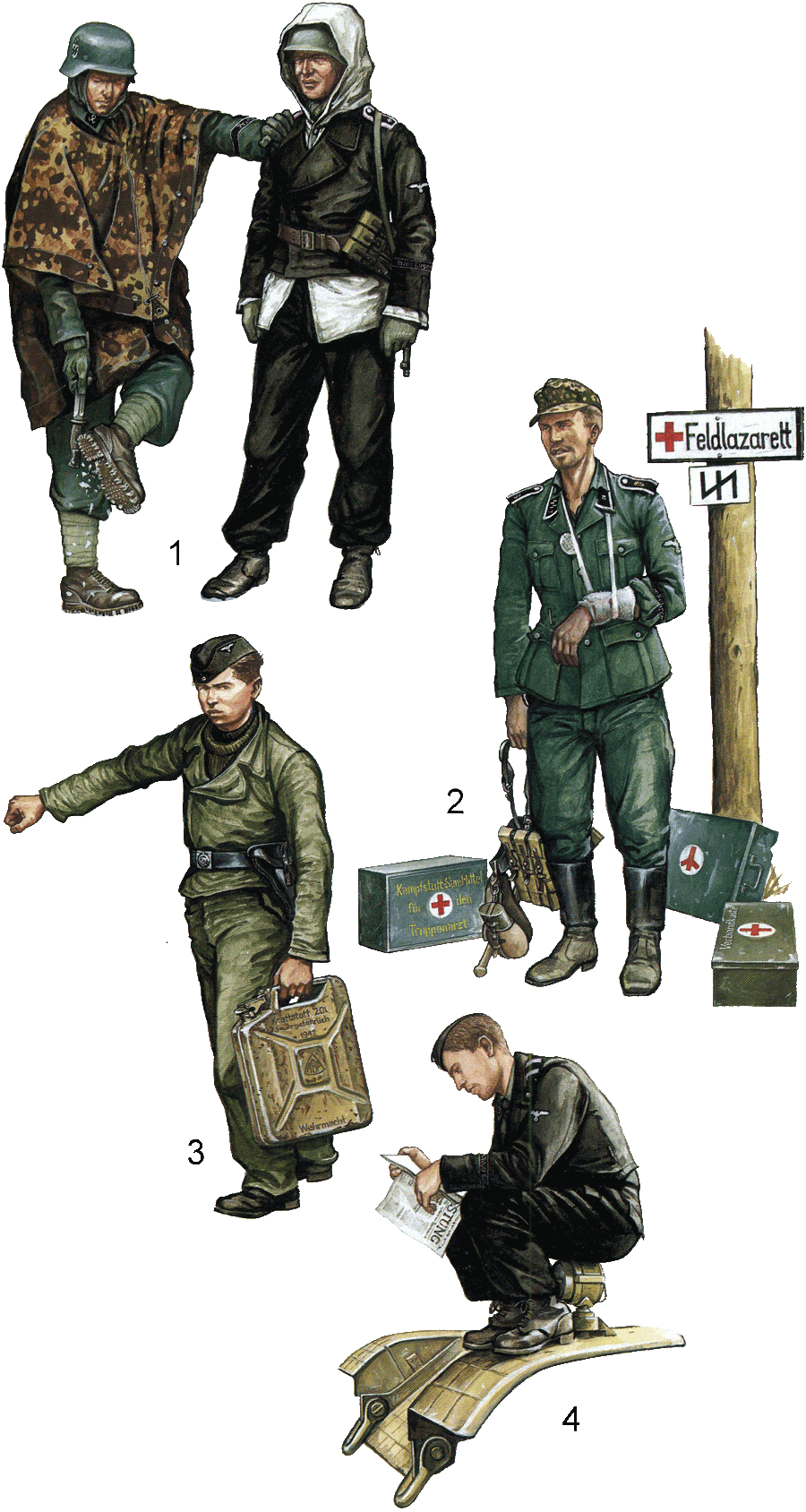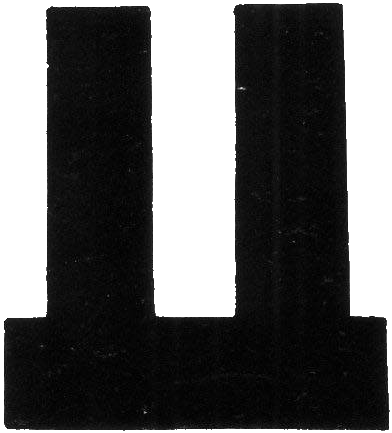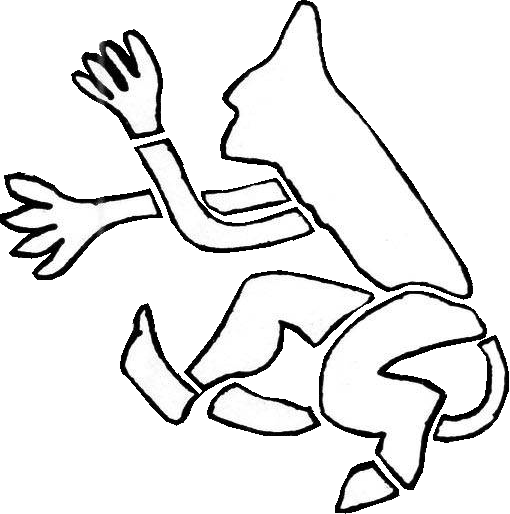
ROBERT C. STERN, illustrated by DON GREER and RON VOLSTAD
SS ARMOR. A Pictorial History of the Armored Formations of the Waffen-SS
After only four days OKH had realized that, at best, any relief would require some assistance from the two trapped corps. On 7 February, Wiking was ordered from its position on the Eastern edge of the pocket to the Western, facing Shenderovka. On the evening of 11 November, the Germania regiment led the attack in the capture of that village. It then had to be held for five days against Russian counterattacks. When the realization finally dawned on OKH that LAH and the relief force were hopelessly bogged down still three miles from the pocket, permission was given for the encircled troops to attempt a breakout on the evening of 16 February. The breakout was to be led by a now much weakened Wiking division. After a day and a half of vicious combat the breakthrough was achieved, but at terrible cost. The divisions that linked up with LAH had suffered well over 30% casualties and the loss of nearly all heavy equipment. It was perhaps the greatest of ironies that at the same time that Wiking emerged from the Korsun Pocket completely denuded of fighting vehicles, it was officially reclassified as a Panzer-Division.

1. Panzergrenadier and SS-Ober-scharführer, Tank Commander, 7. SS-Freiwilligen-Gebirgs-Division "Prinz Eugen", Yugoslavia, Winter 1943. The grenadier is wearing a camouflage Shelter Quarter over a standard Mountain Uniform and Field Grey Toque. The Tank Commander wears the upper half of the standard Snowsuit under his Black Panzer Uniform.
2. SS-Unterscharführer, Panzergrenadier, SS-Panzer-Grenadier-Division "Das Reich", 4. SS-Panzer-Grenadier-Regiment "Der Führer", Russia, Spring 1943. Note the retention of the early style collar tabs and right shoulder strap in spite of being officially superceded in mid-1940. Otherwise he wears a standard Field Grey uniform and an SS-pattern camouflage cap. Note three of the many possible styles of medical chests.
3. Tanker, 5. SS-Panzer-Division "Wiking", Russia, Spring 1944. He wears the Reed Green denim Panzer Uniform with an Olive Green sweater. Note he carries a 1942 pattern gasoline can, the water can having different lettering. Note also the Army style cockade on his cap.
4. SS-Unterscharführer, Tanker, 1. SS-Panzer-Division "Leibstandarte SS Adolf Hitler", France, Spring 1944. He is wearing the late-war shortened Panzer Jacket and low boots. Note that SS tankers now wear a Grey shirt, similar to Army tank crew.

One of the vehicles that bore the brunt of the first attacks, a Tiger of Das Reich's schwere Panzer-Abteilung [Heavy Tank Detachment]. During a lull in the action, some of the Tiger's accompanying panzergrenadiers dig in under the protection of the tank's big gun, within sight of a peaceful looking windmill. [Bundesarchiv]
With the collapse of the front at Korsun, it became obvious to the German command that their lines had to be shortened. The Northern Front, which had been relatively quiet since the Spring of 1942, began to crumble during the winter of 1943-44. Nordland had been fighting there since November, in retreat since mid-January. Because of an almost total lack of tactical reserves in that area, OKH was forced to move some mobile units to the North. Anticipating a Russian drive on the Vistula, the nearly demolished Wiking and the relatively stronger Totenkopf were sent to Warsaw along with 19. Panzer-Korps. LAH along with K-Gr. Lamerding of Das Reich was pulled back to a new defensive line the Germans were trying to establish in the Western Ukraine.
It was a surprise to no one that the next Russian attacks in the South came as a pincer movement piercing the German front at Uman and Rovno. What was a surprise was when it came. A dry and early Spring limited the mud that would normally have halted all major operations for at least a month. Rather than April or May, the Russian Spring Offensive commenced on 4 March 1944, catching the Germans completely unprepared.
The German forward positions were overrun with little difficulty. Though Leibstandarte, part of 4. Panzer-Armee, began an immediate counterattack toward Rovno, it was not only unable to seal off the break caused by the attack of a Russian Tank Army, but was soon forced onto the defensive, retreating to the West. K-Gr. Lamerding of Das Reich, part of 1. Panzer-Armee, retreated Southward with the rest of that encircled army toward the Dniester and Kamentz-Podolsk. Within days the Russian wedges had driven over 50 miles deep into German-held territory, forcing the two Panzer Armies further apart. Manstein, commanding Armee-Gruppe Slid, was disturbed by the widening separation between his armies. If 1. Panzer-Armee continued to retreat to the South, it would be forced through the Carpathians into Rumania, cutting it off from the main front. And Manstein was unwilling to lose a force of 18 divisions, eight of which were armored. He ordered 1. Panzer-Armee to breakout to the West.
The task was to be formidable. A gap of 75 miles now existed between 1. and 4. Panzer-Armee, a gap held by four Russian armies. For the attack, slated for 29 March, the two armies were to push toward each other, hopefully to meet at Buchach on the Strypa. Two of the new SS divisions [9. SS-Panzer-Division "Hohenstaufen" & 10-SS-Panzer-Division "Frundsberg"] were reluctantly allocated to the attack from the West. After seven days of hard fighting the linkup was effected, Hohenstaufen and Frundsberg [2.SS-Panzer-Korps] taking Buchach on 6 April. But as was the case in too many other such battles, the losses were appalling. The SS divisions, particularly LAH, were again in need of refitting.
Simultaneous with the encirclement of 1. Panzer-Armee in the South, the enemy also launched a minor pincer attack against German positions in Eastern Poland, surrounding Kovel. The subsequent relief attacks, involving first Totenkopf and Wiking, later on also Hohenstaufen and Frundsberg, were successful in re-establishing the link with the beleaguered city and holding the line which held until mid-July.

Das Reich Kursk marking
On paper, the Waffen SS was now a formidable force, comprising 17 divisions, 12 of which were at least nominally armored. In reality, it was not even close to this supposed strength. Of the armored divisions, none were at full complement. The most badly shot up were pulled back to the West to refit in anticipation of the Allied invasion. Leibstandarte and a reunited Das Reich joined the still forming Hitlerjugend and Gotz von Berlichingen in France. RFSS, having fought US troops at Anzio, was briefly back in the Balkans along with Prinz Eugen, while Nordland, Florian Geyer, Hohenstaufen, Frundsberg, Totenkopf and Wiking remained in the East. The Waffen SS was obviously no longer the small elite force that represented the Nazi racial ideal. The attrition of war and the manyfold expansion had long since diluted the ideologically-pure cadre that the Waffen-SS was to have been. The only attribute of its elite status it could still claim was that it was now, and until the end of the war, better equipped than equivalent army units. During this brief lull in the early Summer of 1944, the SS could still be considered a tremendously powerful force, if no longer the weapon it had been a year before.

An interesting series of photos showing the Tigers of Das Reich in action.
A captured Russian BA 64 light armored car follows a Tiger into the fight. This tank has already been through some action as can be seen from the damage to the Feifel system. [Bundesarchiv]

Advancing across the rolling hills north of Belgorod, this grenadier leads a group of Tigers while more advance on the opposite ridge. The tanks of the Heavy Detachment were Sand Yellow oversprayed with Red Brown. [Bundesarchiv]

An excellent closeup of the turret of "S13" [S = Schwere = Heavy], The "Gnome" painted on the turret side was carried on most tanks of the sPz-Abt. [Bundesarchiv]

Das Reich Kursk marking

1. Mechanic and Tank Officer, 5. SS-Panzer-Division "Wiking", Poland, Summer, 1944. The mechanic wears the panfs to the denim Panzer Uniform held up by suspenders, and a 1943 pattern Field Cap. The officer wears the Mouse Grey jersey shirt and belted camouflage pants.
2. SS-Panzergrenadier, 12. SS-Panzer-Division "Hitlerjugend", France, Autumn 1944. He is wearing a white shirt under his Field Blouse, visible at the rolled up cuffs, and the short boot with gaiters.
3. SS-Oberscharfährer, Tank Commander, 12. SS-Panzer-Division "Hitlerjugend", France, Autumn 1944. He wears the commandeered U-boat leathers and a fur cap. He is holding an assembly flag, used for visual signaling to other tanks.
4. SS-Panzergrenadier, 12. SS-Panzer-Division "Hitlerjugend", Belgium, Winter 1944. He wears a rubberized rain cape over his camouflage smock and is carrying a captured pistol and cigarettes.



Attached to Das Reich, though technically an independent formation, the Panther ausf Ds of the SS-Panther-Brigade are seen here in the three rare photographs. In the first shot two Panthers are seen dug into defensive position, extensively camouflaged with straw. The view below is of interest in that the vehicle numbers have been painted over the spare track links on the track side. These vehicles are in the regulation three color scheme, authorized in February but just coming into effect. [Bundesarchiv]

Advancing to the front, the lead vehicles of a company of PzKpfw IIIMs of Totenkopf are seen. The closest vehicle is painted in Sand Yellow with a rather crude Red Brown overspray. Note that the spare track links have been painted and oversprayed as well as the inside of the skirt armor. The vehicle immediately behind is an SdKfz 250/1 ISPW displaying the division's Kursk markings, three vertical bars above a horizontal cross bar. [Bundesarchiv]

Totenkopf Kursk marking

Two Tiger ausf Es of Totenkopf follow a StuG III loaded with grenadiers across the grasslands near Kursk. These tanks were to advance farther than any other German forces, pushing a bridgehead over the Psel. This photo illustrates well the limitations of any camouflage scheme. These vehicles are painted with the same colors and in a similar pattern to the those of Das Reich, but silhouetted against the sky and sun, they would still make excellent targets. [Scott Van Ness]

Three more shots showing similarities and differences between these Tigers of Totenkopf and those of the other divisions. Most striking is the relative lack of markings in comparison with those of Das Reich, here the divisional insignia was almost never seen on a combat vehicle.
Hull-down near the top of a ridge, one of Totenkopf's Tigers is receiving an uncomfortably close return fire. [Bundesarchiv]


An interesting pair of shots of "111", before and during the action. Some days have passed between these photos. On the left it is seen moving into the fight in a line of similar vehicles, below it is halted during a pause in the activity to receive instructions. Note that the battle-damaged hull skirt was found to be a convenient place to store a jerry can. Note also the style of camouflage, composed of a random overlapping sprayed line of Red Brown over the base coat. The number was added later. [Bundesarchiv]

Totenkopf


Because of its exertions during the drive into and retreat from the Caucasus, Wiking was the weakest of the SS divisions at Kursk. For that reason it was held in reserve, seeing no action during the offensive itself, getting into the fight only during the following defensive struggles. It did however continue to receive equipment, always the newest and best. This is a fairly rare vehicle, an SdKfz 132 Marder II based on the experimental PzKpfw II ausf D. [Bundesarchiv]

An interesting shot of an SdKfz 9 Famo eighteen tons halftrack of Wiking's tank recovery company, seen hauling a captured Russian Valentine on a trailer. While the Germans did press captured Valentines into service in North Africa, it is unlikely that the same thing would be done here. [Scott Van Ness]

While the Kursk Offensive was called off largely in response to the Allied landings on Sicily, ostensibly because the elite SS-Panzer-Korps was needed there, in actual fact only LAH moved to Italy and saw no action while there. The main accomplishment was to pressure, by its presence, a skittish Italian government, and re-equip itself with new armor. Seen here on parade in the streets of Milan are a pair of brand new Sand Yellow, Red Brown and Olive Green PzKpfw IV ausf Hs. While the vehicles used by Leibstandarte at Kursk had been virtually unmarked, this more peaceful situation saw the re-emergence, possibly for the last time, of the shield, key and wreath emblem on LAH's tanks. [Scott Van Ness]


Immediately following the cancellation of the Kursk attacks, the units of the SS-Panzer-Korps were withdrawn for transfer to Italy. Strong Russian attacks on the Mius positions west of Rostov forced an alternation of these plans and the switching of Das Reich and Totenkopf to the region of Stalino. These views of Totenkopf's StuG-Abt date from that period.
An Obersturmführer adjusts his earphone volume while standing in the cupola of his StuG III ausf G. He is wearing the standard Field Gray assault gunners uniform. [National Archives]

The men of a mortar platoon march across the rear of an advancing company of StuG III ausf Gs. Of interest is the three stripes insignia on the rear plate of the rear assault gun, this was a modification of the Kursk insignia adopted by Totenkopf in the Spring. [National Archives]

Another version of the three-stripe marking, this time in Black, can be seen of this early Tiger of Totenkopf. The four tankers visible are all wearing the one-piece tankers coverall and a variety of headgear. The solider straddling the barrel of the 8.8 is probably a grenadier just hitching a ride. Note the death's head collar tab, characteristic of the division's uniforms. [National Archives]

This Totenkopf Unterscharführer is an excellent study of a forward observer. Around his neck is the camouflage mask which would be raised up over his face. Presumably his Knight's Cross and collar insignia would be tucked into his smock in order to camouflage his entire upper body. [National Archives]

A well known shot, showing two grenadiers standing by the second company pennant of one of Totenkopf's motorized infantry battalions. These pennants were used as rallying points during combat, indicating the location of the company HQ. The three stripes may indicate the battalion number, or may be the divisional insignia.

A recon squad of Totenkopf's Auf-Abt mounts their SdKfz 250/1. The divisional insignia is faintly visible on the vehicle's front plate. The Fall mud has arrived and the Winter parkas have again made their appearance. Note the variety of fur with which the parka's hoods are lined. In the background is a StuG III ausf G. [National Archives]

The Winter's battles west of the Dniepei brought Leibstandarte back from sunny Italy to the snows of Central Russia. This snow camouflaged early StuG III ausf G is interesting in that its kills are denoted not only by rings around the gun barrel, a fairly common practice, but also by vehicle silhouettes on the superstructure. [Bundesarchiv]

A 7.5cm Pak 40 of LAH is seen here behind a natural camouflage of snow blocks. Note that while the front of the gun is painted White, everything behind the shield, and therefore theoretically invisible to the enemy, is still Panzer, Grey. [Bundesarchiv]

An old friend, "S13" of Das Reich's sPz-Abt follows "S33" through the first snow of the Winter 1943. Last seen in the wheat fields around Kursk, these Tigers are now a little worse for the wear. Note the extensive damage to the external fittings such as the Feifel system, "S" mine projectors and hull skirts. In spite of the onset of Winter, these vehicles are still in their Sand Yellow and Red Brown camouflage. [Bundesarchiv]


Two more views of Das Reich moving through the woods near Berdichev. To the left above is a front view of two Tigers, to the right three PzKpfw IV ausf Hs follow a pair of Panthers. The PzKpfw IVs have a very even coat of Zimmerit on their turret schurzen. The nearest tank is painted overall Sand Yellow, the cross at the rear of the turret having been painted over sometime after the original paint job. The "Kursk-style" divisional insignia is still being carried. [Bundesarchiv]


While the Winter was just settling in around Kiev, the snow was deep where Nordland was engaged in North Russia. To the right are two views of that division's armor in the defensive battles back from Oranienbaum to the Narva. In the photo right, a line up of Tigers of SS-Pz-Abt 502, attached to Nordland's Pz-Rgt "Hermann von Salza". Below a close up of a StuG III ausf G. None of the vehicles display any recognizable markings, snow camouflage covering all upper surfaces.


The Winter of 1943-44 saw a continuation of the fierce fighting. For Wiking and LAH it meant the bloody battle of the Korsun Pocket, called Cherkassy by the Germans. Wiking was on the inside, Leibstandarte part of the unsuccessful relief force. This shot shows in excellent fashion how the men of Wiking appeared upon fighting themselves free. No longer adequately equipped, undermanned and totally without armor, the division was fit only to be withdrawn and entirely rebuilt.

Part of the unsuccessful relief force, these two SdKfz 251 mSPWs of LAH are seen at Shepetovka during the brief lull in fighting, March 1944. "Emil", in the foreground, is a 251/3 radio halftrack while the 251/1 in the background is a standard APC. With Spring on its way in South Russia, the White paste camouflage is being allowed to wear off naturally. Note that while most visible troopers are wearing their parkas Mouse Grey side out, one grenadier still shows the White side. There was no specific date upon which whole units altered camouflage. [Bundesarchiv]
We have much more interesting information on this site.
Click MENU to check it out!
∎ cartalana.com© 2009-2025 ∎ mailto: cartalana@cartalana.com